Conference Highlights
The Future of Global Value Chain Governance conference in Amsterdam was organised by Katalyst Initiative with the support of partners The University of Amsterdam Responsible Business Conduct Lab, and Cornell University ILR Global Labor Institute.
75 experts representing trade unions, environmental and labour NGOs, academia and governments came together to start laying the groundwork for the next generation of value chain governance efforts for human rights and environmental protections. The day’s discussions, led by a range of expert speakers and panelists, focused on the need for governance that supports a Just Transition to an economy that operates within planetary boundaries while ensuring decent work for the billions of people employed in global value chains.
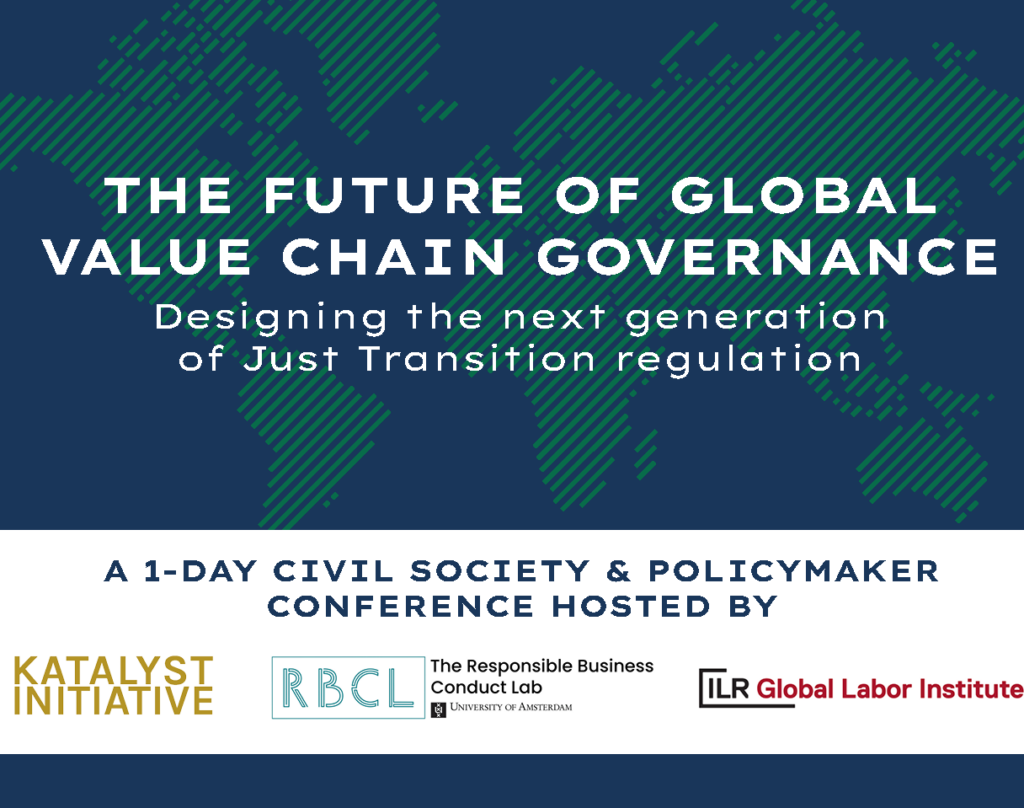
Key Takeaways From the Day's Presentations
During an event with so much rich content, it’s impossible to convey everything that was shared, so Katalyst has selected one key takeaway from each speaker and panelist that seemed to resonate with participants, to help provide a sense of the day’s discussions:
Additional Resources
Our Recommended Reading list includes links to the cutting-edge research & policy ideas shared during the conference.
The Speaker & Panelist Bios provide more information and links to the organisations our speakers and panelists represent.
Research & Policy Presentations
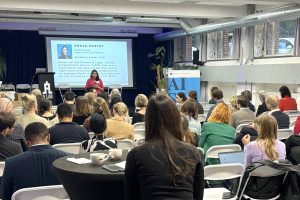
Just Transition in Global Value Chains
Sonia Mistry, Climate and Labor Justice Director, Solidarity Center
One key takeaway: Just Transition must be based on social dialogue, where trade unions shape our responses to climate change. Corporations and governments alone cannot deliver a transition to a low-carbon economy that is ‘just`
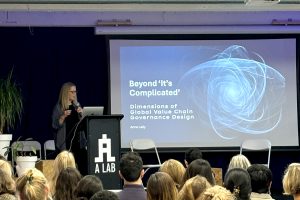
Beyond it’s Complicated: Dimensions of Global Value Chain Governance Design
Anne Lally, Board Chair, Katalyst Initiative
One key takeaway: Katalyst’s new project aims to help civil society and policymakers understand and integrate the various dimensions (including climate factors; industry; governance forms; and geography) needed to develop effective value chain governance solutions.
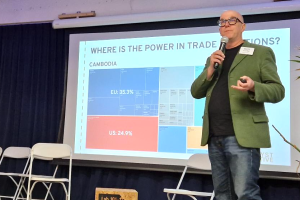
Visualising Power in Global Value Chains
Martin Curley, Head of Research & Policy, Katalyst Initiative
One key takeaway: The CSDDD and similar new laws will have limited impact in areas where the EU or US is not a major trade partner. So we already need to be thinking about additional governance tools – via law, collective bargaining, treaties, and more – to ensure a Just Transition globally.

Trade Flows and Governance Design: A Policy ‘Trilemma’
Luc Fransen, Head of the University of Amsterdam Responsible Business Conduct Lab
One Key Takeaway: We see three pathways for the EU and US to compensate for the limits of their leverage with trade partners while still achieving labour and environmental protections. But policymakers need to understand the trade-offs involved as new strategies are developed.

Reflecting on the ‘Trilemma’ / Trade and Labour: Rethinking Policy Tools for Better Labour Outcomes
Mekhla Jha, Inclusive Trade Specialist, World Economic Forum
One Key Takeaway: Many stakeholders are realising the need to strengthen synergies between trade and labour policy tools, to promote policy coherence, and encourage international collaboration.

The Spectrum of Global Value Chain Governance Forms
Klaas Eller, Associate Professor of Private Law, University of Amsterdam
One Key Takeaway: Much is changing in value chain regulation with the shift from soft to hard law. But we need to remember that these new regulations enter a world of existing laws, many of which can reinforce the status quo, and create challenges for policy coherence.
Case Studies
Participants had an opportunity to apply some of the morning’s ideas and observations to real-world Just Transition dilemmas, and consider the opportunities and limits of a range of current and proposed governance solutions – benefitting from the multidisciplinary expertise in the room.
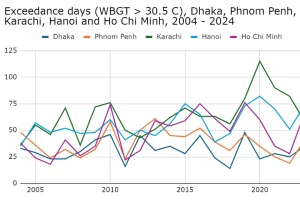
Heat Risk in Asian Garment Factories & the CSDDD
Jason Judd, Executive Director, Cornell ILR Global Labor Institute
One Key Takeaway: Extreme heat will increase in many garment hubs. National laws to set guidelines are often inadequate, as are CSDDD-related reporting requirements. This poses serious questions about how companies and governments will deal with the problem.
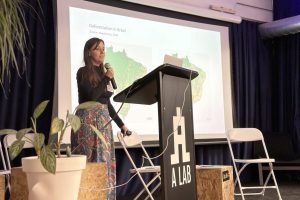
Deforestation in Brazil, Soy, and the EUDR
Gabriela Russo Lopes, Socio-Biodiversity Researcher, UvA Centre for Latin American Research and Documentation
One Key Takeaway: Will the EUDR have impact on Brazilian Soy deforestation? Most soy is exported to China, but that comes from land that is already deforested. But the industry’s structure means the EUDR can play a really important role in preventing future deforestation in land not yet under cultivation.

Forced Labor Risks & US Import Bans
Caitlin Helfrich, Senior Policy Advisor, ILAB, US Department of Labor
One Key Takeaway: Import bans can be an effective form of supply chain governance. We find they require a ‘whole of government’ approach that links forced labour reports from global civil society; research conducted by US Department of Labor; and implementation by US Customs.
Expert Panel: Success Factors for the Next Generation of Value Chain Governance
While the conference focused significant attention on the interplay between trade flows and governance, that is only one of many issues that need to be addressed in creating the next generation of governance for a Just Transition. We asked our panelists to speak to five other governance topics, each of which would merit a separate conference. We share a few highlights here:
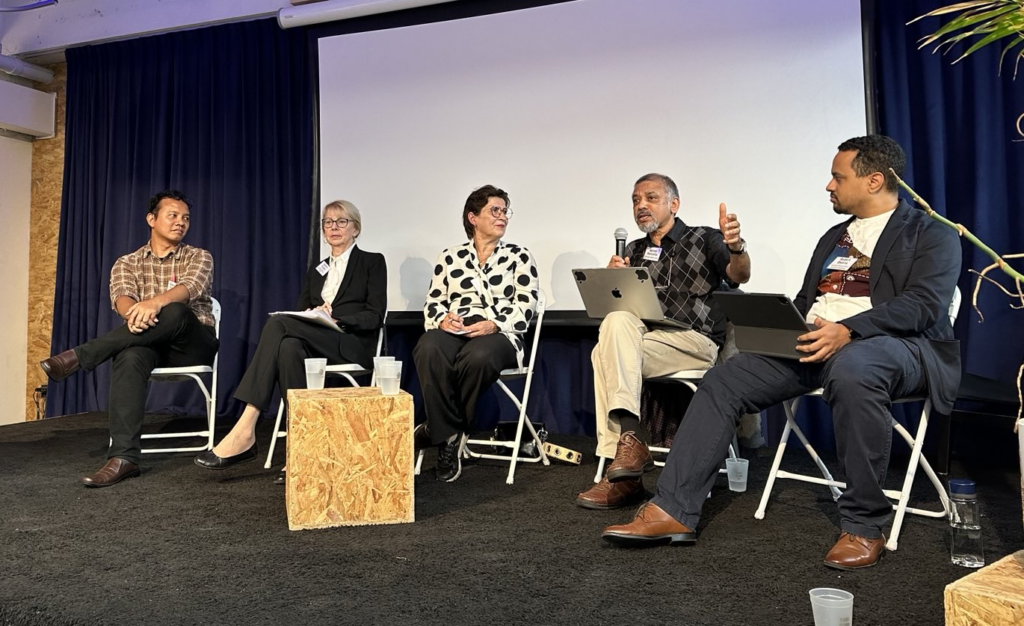

How can trade unions and rightsholders have a central role in global value chain governance in the future?
Sandra Polaski, Senior Fellow, Boston University Global Development Policy Center; former US Deputy Undersecretary of Labor; and former ILO Deputy Director-General for Policy
One key takeaway: The USMCA Rapid Response Mechanism is an innovative example that directly links trade union rights to trade policy. It shifts the focus of labor protections in trade policy from traditional government-to-government dialogue to specific trade unions and specific workplaces. The mechanism’s lessons can inform future policy design.

How can EU- or US-based global value chain governance efforts support trade unions and other rightsholders in trade partner countries?
Wiranta Ginting, Deputy International Coordinator, Asia Floor Wage Alliance
One key takeaway: Garment brands are not ‘buyers’ of commodities. They are actively involved in determining what is being made, when, and for what price. Value chain governance needs to acknowledge that brands operate as ‘joint employers’ with factories, and needs to create mechanisms that can hold brands legally liable, and make negotiations with trade unions possible.

How can future governance efforts make it easier to require companies to sign up to enforceable brand agreements, like the Bangladesh Accord or the proposed Severance Fund EBA?
Lilianne Ploumen, feminist activist, CCC advisor and former Minister for Foreign Trade and Development Cooperation of the Netherlands
One key takeaway: We should not forget the important role governments can play in either supporting bipartite labour-industry negotiations, or as an active partner in tripartite negotiations, in supporting change.

What should governments really be measuring if they want to know if value chain governance efforts are working?
Sarosh Kuruvilla, Academic Director of the ILR Global Labor Institute and Professor of Industrial Relations and Asian Studies, Cornell University
One key takeaway: Companies talk about ‘reporting burdens’ but the reality is there are a fairly small number of data points that can tell us a huge amount about value chain conditions – and mostly this is data companies already have. They key is focusing on hard data that describes outcomes – not pages and pages describing inputs and processes.

What are the opportunities and limits of new technologies in successful value chain governance?
Robert Masua Bwana, Researcher on technology & value chains, University of Amsterdam Business School
One key takeaway: Technolology is just a tool, and needs to be designed for and with rightsholders. There is always hype about how the latest advance – the internet, blockchain, and now AI will fix everything. But we need to remember a simple text message containing information of value to an individual is often a greater force for change than an expensive app designed on the other side of the world.
Reflections on the Day
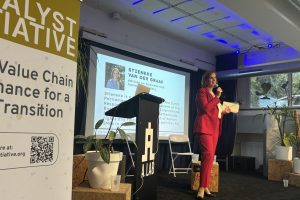
Stieneke van der Graaf, advisor on business and human rights and former Member of the Dutch Parliament
One key takeaway: The complexity of the issues should not slow us down, or be a reason for businesses not to do anything. The message to business needs to be start somewhere, doing something positive, and develop from there.

Ineke Zeldenrust, Coordinator, Clean Clothes Campaign International Office.
One Key Takeaway: Looking to the future, we collectively need to consider what has not worked in the past from the perspective of rightsholders. With limited time and resources, we need to stop investing in strategies that don’t deliver, and prioritise those which do.

Hendrine Stelwagen, Conference Host & Board Member, Katalyst Initiative
One Key Takeaway: It’s been exciting to see this multidisciplinary group of experts come together – working in different industries, different countries, different fields of expertise, different supply chain levels – to create new connections that can only strengthen civil society’s Just Transition efforts.
About the Venue

A-Lab is home to Katalyst Initiative and to a community of social-change focused and creative organisations and individuals. Housed in the former Shell Oil laboratory, A-Lab now serves as an incubator for cultural and social innovations, and solutions to complex problems for today and the future.
It serves as a workplace, neighbourhood centre, studio, hub, and event venue all rolled into one.
Learn more about A-Lab, how to join or renting the meeting facilities here!


